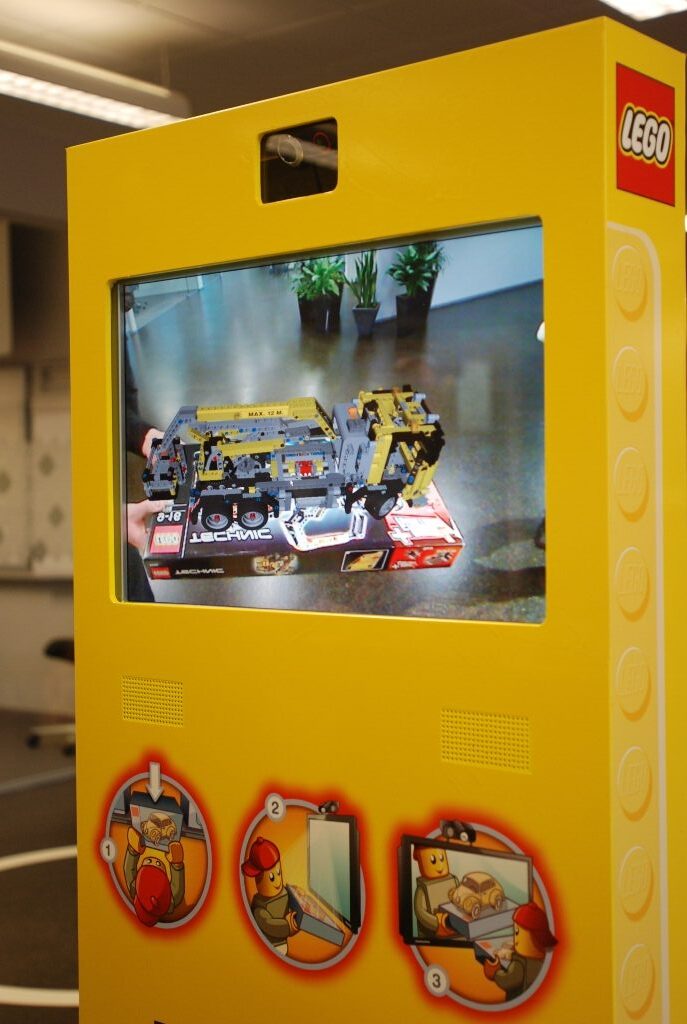Augmented Reality Shaping Digital Marketing.
Browse the content:
- Statistics on Augmented Reality in Digital Marketing.
- Examples of Applications in Content and Mobile Marketing.
- Challenges with AR for Digital Marketing + Tips.
- Summary
- Get our Best Courses!
No doubt you all remember moments when you were searching for information on Google and were surprised by personalized advertisements based on your search later on. This happens in cooperation with digital marketing, machine learning, and SEO optimization. However, what if I tell you that the real potential of technology and digital marketing goes beyond screens?!
Indeed, digital marketing can be experienced along other dimensions, moving from once all-virtual to tangible applications. For instance, Augmented Reality (AR) and Virtual Reality (VR) are groundbreaking technologies that have revolutionized how we interact with the digital and physical world. On one hand, VR immerses users in entirely new environments, isolating them from the real world through headsets and headphones. On the other hand, AR leverages digital elements in the real world, utilizing sensors like GPS, gyroscopes, and accelerometers to understand a user’s surroundings. All these gadgets are a part of our smartphones, which we use daily. The experience can become ”unrealistically” real with AR as opposed to VR. It combines our tangible world, technology, and marketing practice for digital.
”I do think that a significant portion of the population of developed countries, and eventually all countries, will have AR experiences every day, almost like eating three meals a day. It will become that much a part of you.”
Tim Cook, Apple’s CEO
As Tim Cook, the CEO of Apple Inc., has praised AR technology many times, let’s delve deeper into AR technology’s distinct applications in digital marketing. But first, I share some real statistics and evidence on why digital marketers should care about AR in general. Based on projections:
- AR market has recently surpassed a valuation of $32 billion
- AR revenue is projected to be $50 billion by 2027
- 1.4 billion active AR user devices globally
Based on such statistics, we see a growing market for AR. Besides, AR-based shopping is a catalyst for increased spending of nearly half of all consumers. For example, digital marketers can use AR for content and mobile marketing. There are already innumerable examples of applications by different companies in various industries.
Applications for content and mobile marketing
Many agree that content creation is the foundation of any augmented reality digital marketing campaign. By providing engaging and informative AR experiences on top of what is in reality, businesses can increase conversion likelihood, turning visitors into paying customers. Therefore, the immersive nature of AR content contributes to a more comprehensive understanding of products or services, further driving interested consumers toward your business.
The strategic infusion of AR into digital marketing campaigns serves multiple purposes for created content: elevates product demonstrations, creates interactive games, or facilitates virtual try-on experiences via the internet or other internet-enabled devices. As a result, AR content reduces obstacles to purchasing decisions, guides the customer journey, and amplifies brand impact and loyalty.
For example, some businesses across both the B2B and B2C sectors have effectively utilized AR in content marketing. Examples include IKEA’s Place Tool App in 2017, which lets customers virtually plan room layouts for furniture. This IKEA’s success resulted in a 20% reduction in product returns and a 35% increase in online sales.
StubHub’s AR feature allows users to visualize Super Bowl seating plans, a complement enabling a higher conversion rate. Presenting seating options tangibly guides potential customers towards premium seats, positioning it as a valuable marketing tool for higher-priced acquisitions.
Brands like Coca-Cola and Amazon have employed AR to address specific challenges in B2B, such as visualizing in-store placements, and in B2C, by offering virtual try-on options for products like shoes. Moreover, LEGO allows you to experience a product in 3D before you even buy it.

Thanks to AR, printed advertisements and products (traditional marketing) gain viability for digital marketing purposes. For instance, The New Yorker’s Journal feature enables users to witness animated AR models of magazine covers through the camera on their mobile devices. This feature can give people a vivid chance to experience what the magazine might be about before buying it. Moreover, AR ideas can be leveraged on social media via AR-enabled content, calling mass traffic to specific actions. Snapchat and Instagram make AR filters available to craft engaging and immersive experiences for your audience.
In a digital marketing landscape where static tools falter, AR stands out by providing dynamic and interactive storytelling platforms. This technology leverages classic techniques via different channels and innovative ways of engagement.
So, how exactly does AR shape digital marketing?
- Enhanced Engagement and Interactivity
- Improved Customer Experience and Personalization
- Innovative Advertising Formats
All these points are achieved in digital marketing via AR: through the internet and electronic devices in video, display ads, paid social ads, and social media posts. Surprisingly, it also connects traditional marketing with digital marketing in some instances.
3 challenges with AR for digital marketing (+Tips)
Compatibility Challenges
Ensuring seamless functionality across diverse AR devices and platforms with varying technical requirements.
Tip: Develop a standardized set of technical specifications for AR content, encouraging collaboration among industry stakeholders to streamline compatibility.
Expertise and Talent Gap
Building AR apps in-house requires specialized skills like 3D modeling, SDK knowledge, and coding expertise, posing challenges in talent acquisition.
Tip: Invest in training existing teams, collaborate with external AR specialists, or leverage third-party AR development services to bridge the expertise gap.
User Experience Complexity
AR experiences may seem complex to users unfamiliar with the technology, necessitating intuitive design and user guides.
Tip: Prioritize user-centric design, create comprehensive guides, and conduct user testing to refine AR experiences, ensuring accessibility and reducing complexity.

Boost your digital marketing skills with us and learn more about leveraging new technology…

Leave a Reply
You must be logged in to post a comment.